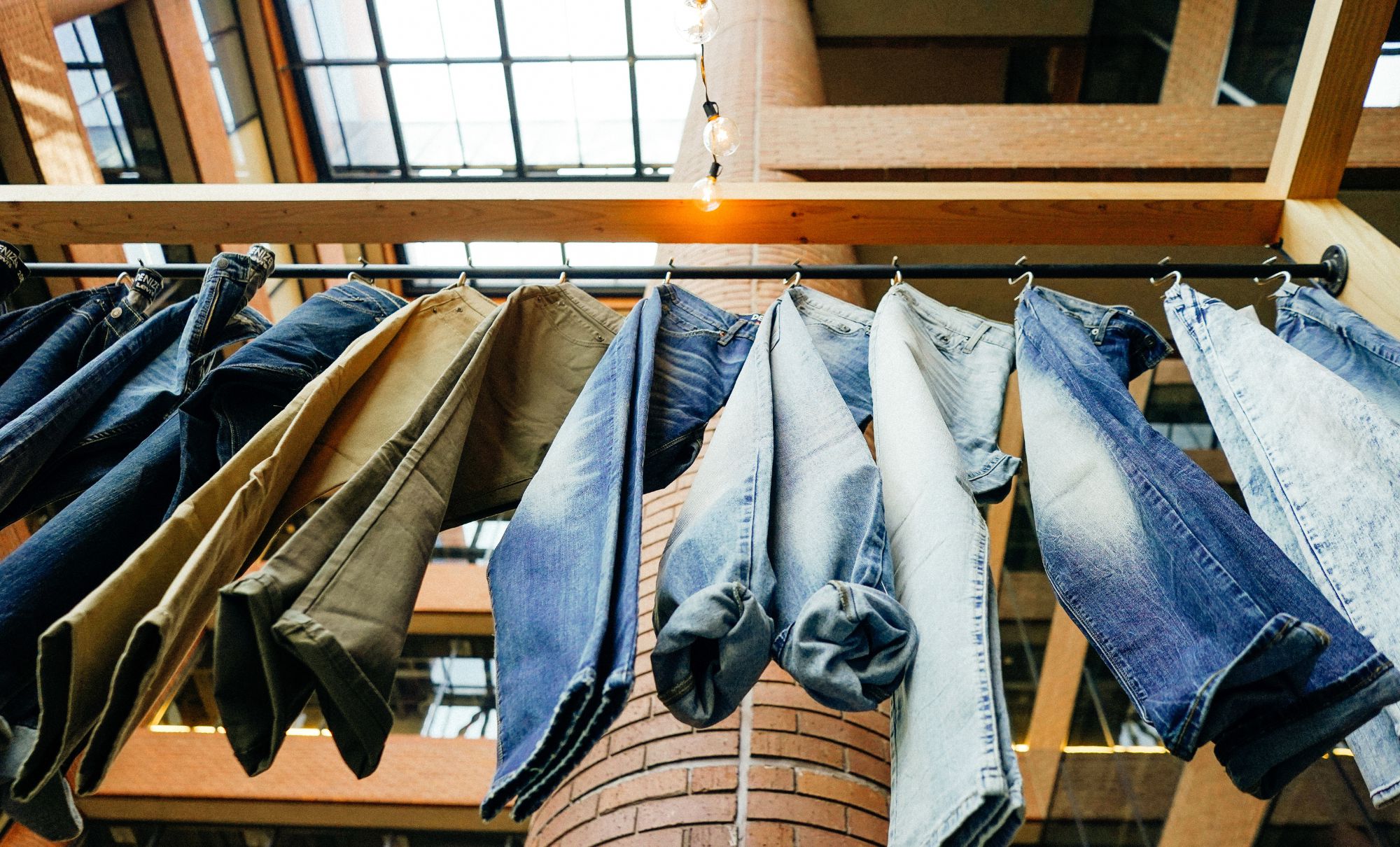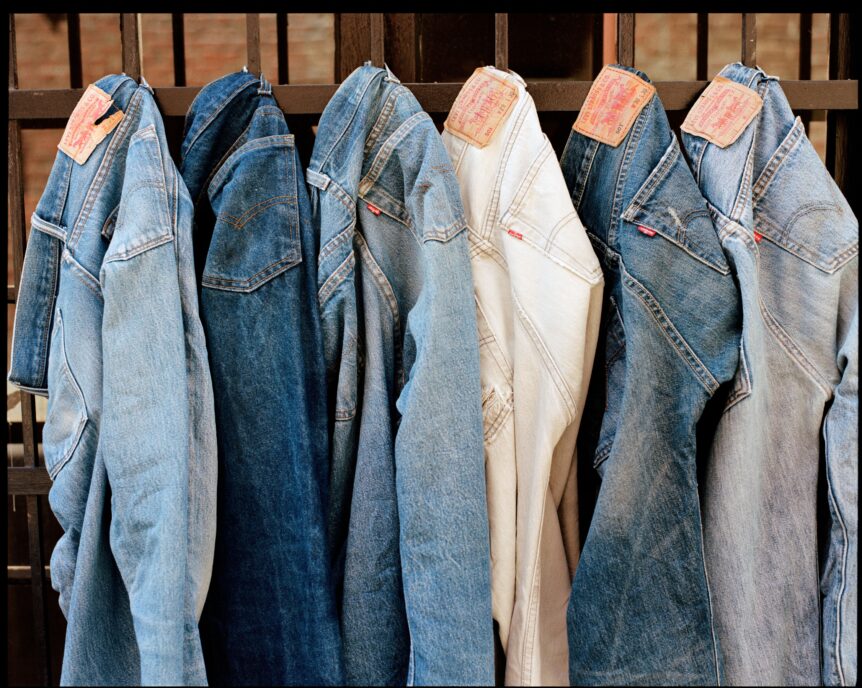At Levi Strauss & Co., we’re constantly looking for new and improved ways to increase efficiency throughout the organization with a sustainability-first mindset. In some instances, seemingly simple changes wind up having a dramatic impact, and it can all start from asking a question.
For example, on a recent visit to the LS&Co. distribution center in Henderson, Nevada, members of our Distribution & Logistics Strategy team were searching for ways to drive operational efficiencies in the U.S. fulfillment process. As they walked through the facility, they kept seeing hangers in different parts of the building — on clothes coming in, on clothes going out, being taken off, being added, being recycled — with employees having to handle them at every step.
This prompted the question: Do we need this many of them? Traditionally, as products arrived to the distribution centers, many Trucker jackets, shorts, and some tops and bottoms came in on hangers, which would later be removed or adjusted to meet the requirements of wholesale customers, direct-to-consumer platforms, and our company-operated stores. The hangers had once been a value-add but they were no longer needed at scale, because many customers used their own hangers in store or no longer needed them as they moved sales online.
After doing some back-of-the-napkin math, the team posited that if we had products shipped to our distribution center without any hangers and had our people add hangers only to those garments that really needed them, it could have far-reaching benefits for the business. They subsequently determined that if they made this change, they could reduce the volume of hangers used by nearly half, equal to more than 7 million hangers across the U.S., and save an estimated 40% of the amount they had been spending on hangers and related activities.
Adding hanging to the process at the distribution center, especially when all supply chains are facing enormous challenges, was no small thing. The team didn’t want to add additional burdens to the staff. But having seen how much time staff had been spending removing and reinserting hangers, they hoped it would free up time for people. And they were right. Their calculations have shown that shipping products to the distribution center without hangers will ultimately save approximately 900 hours of labor annually, time that had previously been spent removing hangers that were, in fact, no longer needed.
“Our teams have been working tirelessly to meet increasing consumer demand over the past two years, and we built a special team to help optimize distribution,” said Stephen Berube, Senior Vice President, Global Distribution and Logistics. “I didn’t anticipate their observation would lead to a win-win-win situation across the business. Not only are we now expecting to save time on the distribution center floors, the cost and carbon savings will add immediate, tangible benefits for the company and the planet.”
These savings will also have an immediate impact on our environmental footprint as well. As the program reaches scale across the U.S. in 2023, we’ll eliminate nearly all hanger waste and expect to reduce our carbon emissions by an estimated 400 metric tons — the emissions equivalent of 400 flights between New York City and Paris.
Innovation and sustainable practices make good business sense. In this case, curiosity about the status quo led to efficiencies with immediate impact for our employees, our bottom line and our environmental footprint, with learnings that we can now look to apply elsewhere across our business.







